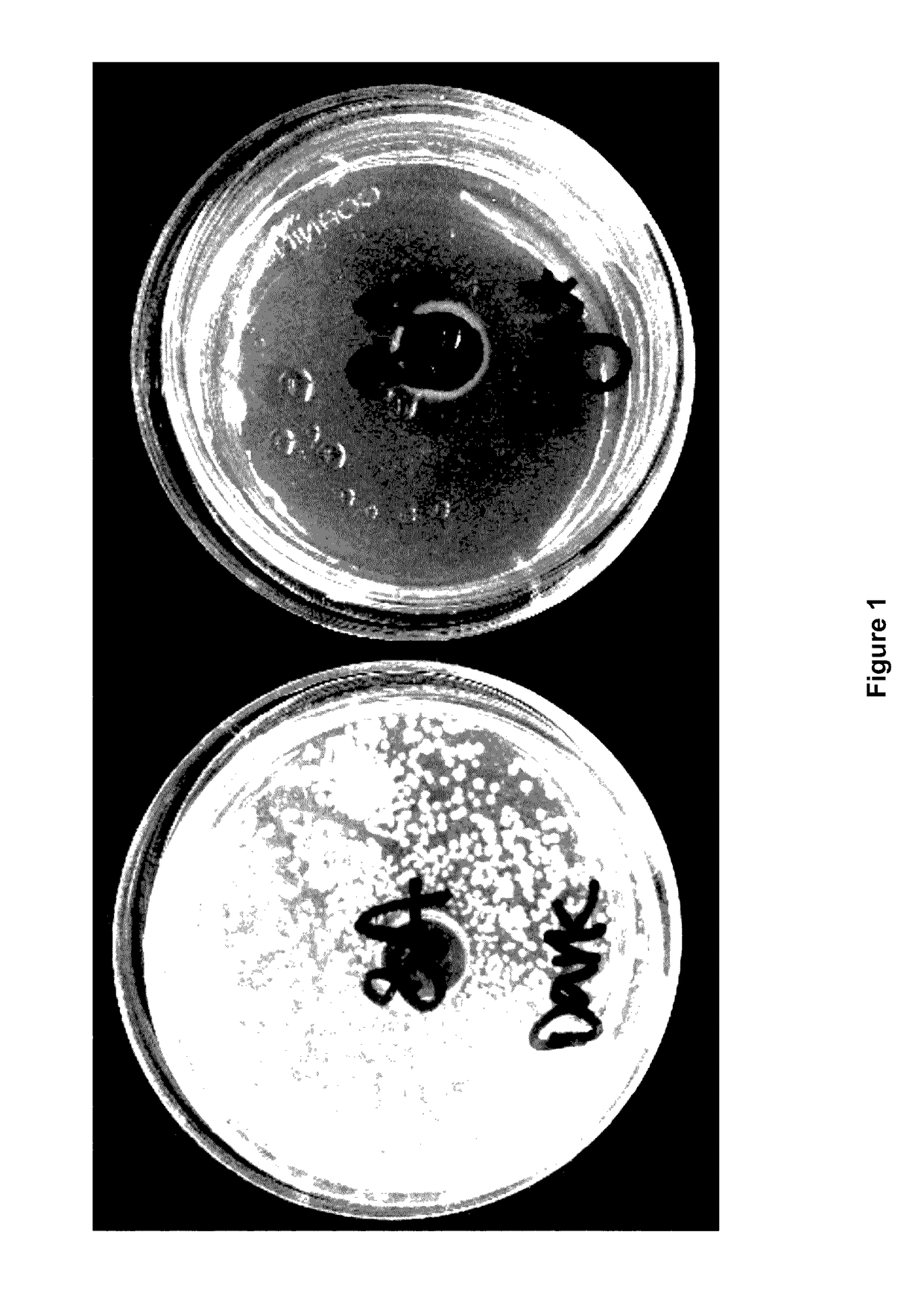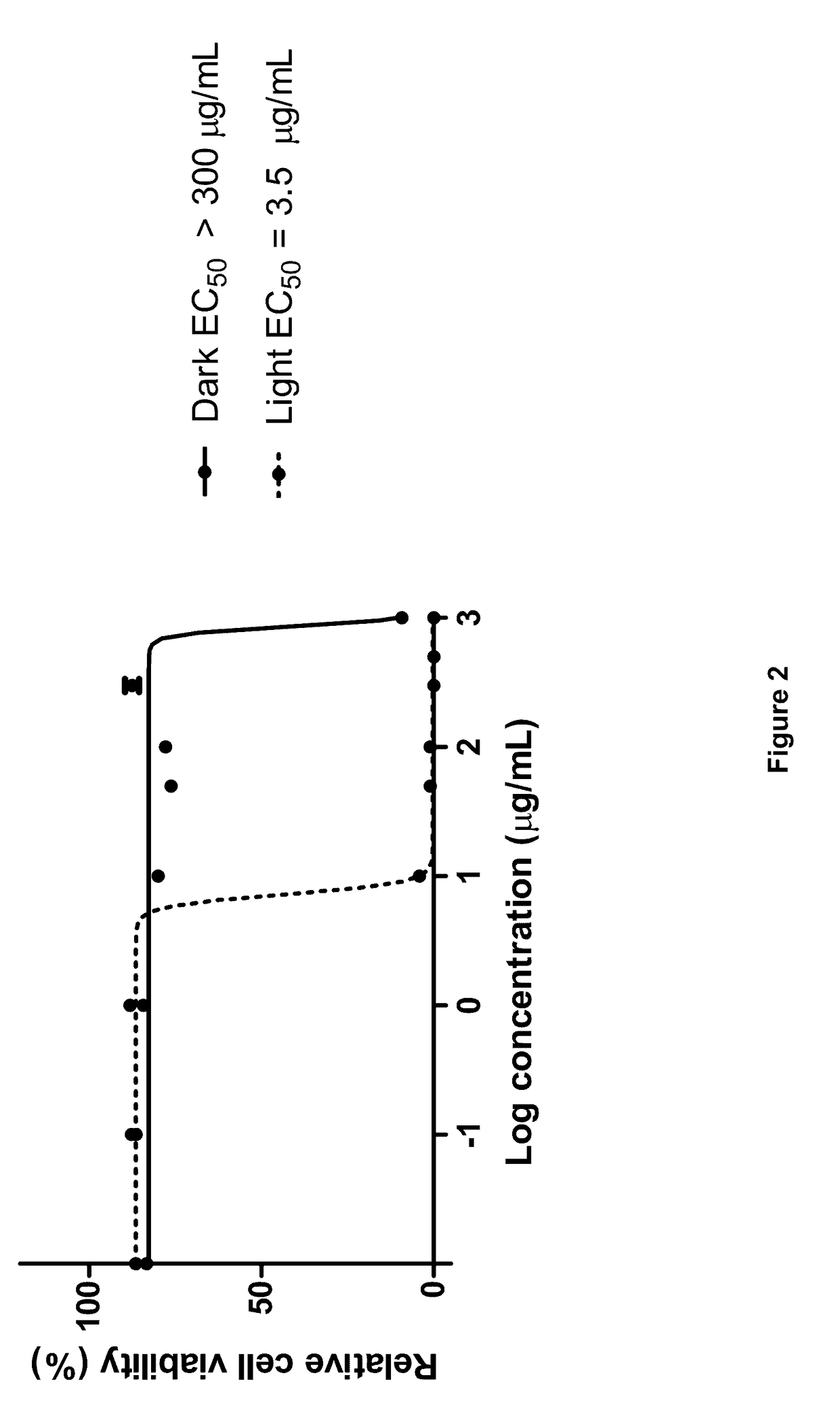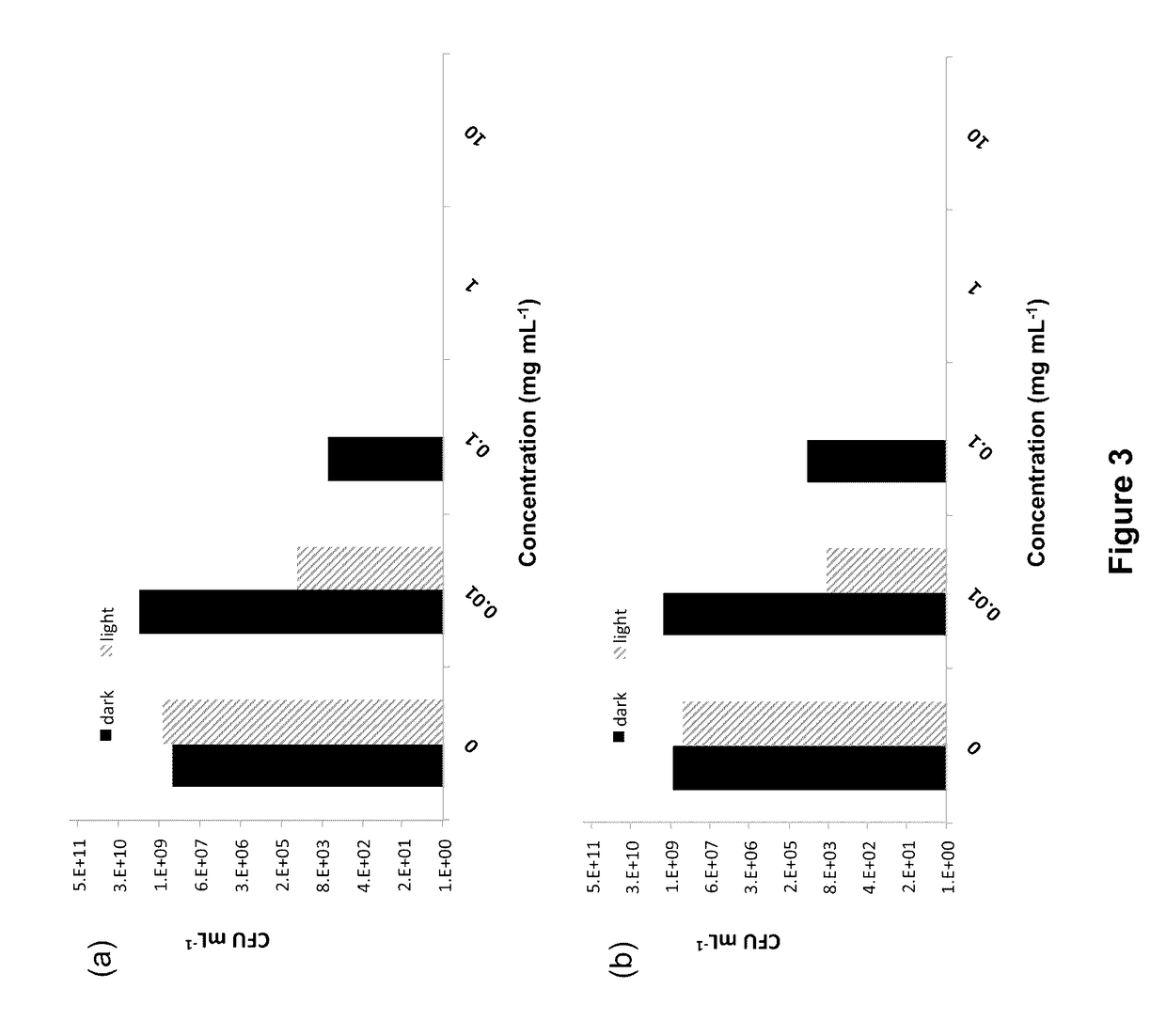Novel Polygonum Cuspidatum Extracts and Their Use as Photodynamic Inactivating Agents
a technology of inactivating agent and polygonum cuspidatum, which is applied in the direction of antibacterial agents, drug compositions, therapy, etc., can solve the problem that the root antimicrobial action diminishes its oral power, and achieves the effect of reducing the power of root antimicrobial action
- Summary
- Abstract
- Description
- Claims
- Application Information
AI Technical Summary
Benefits of technology
Problems solved by technology
Method used
Image
Examples
examples
[0178]The invention is further described in detail by reference to the following experimental examples. These examples are provided for purposes of illustration only, and are not intended to be limiting unless otherwise specified. Thus, the invention should in no way be construed as being limited to the following examples, but rather, should be construed to encompass any and all variations which become evident as a result of the teaching provided herein.
Materials and Methods
[0179]Dimethylsulfoxide (DMSO, 99.7%) was purchased from Fisher Scientific. 5% aqueous propylene glycol (PG) was prepared as a vehicle for in vivo testing by diluting commercial propylene glycol (99.5%, Sigma-Aldrich) with sterile deionized water. Toluidine Blue 0 (TB) was purchased from Sigma-Aldrich and diluted with sterile deionized water. Listerine Zero (Johnson & Johnson) was purchased at a local grocery store, and Oro-Clense (Germiphene Corporation, DIN 02209055) was obtained from a dental clinic. Chlorhexi...
example 1
Antibiotic Activities of P. cuspidatum Extracts
[0214]Dark and light-mediated antibiotic activities of P. cuspidatum extracts were probed using a tryptic soy agar (TSA) diffusion test (Table 10; FIG. 7). Increasing concentrations of the extract in DMSO, from 0.01% to 10%, were tested against 300 μL of S. aureus or S. mutans inoculum (3×108 CFU mL−1). After a 30 minute incubation period, one plate was irradiated with light for 1 hour to yield a total light dose of 35 J cm−2, while the dark plate was protected from light. Inhibition zones were measured after a further 16 hour incubation period, and indicated the degree of bacterial sensitivity to these extract strengths and conditions. At the lowest concentrations, 0.01% and 0.1%, the P. cuspidatum extracts showed no discernible antibiotic activity against S. aureus or S. mutans in the dark. However, light activation of the P. cuspidatum extracts produced inhibition zones of 8 and 12 mm for the two concentrations, respectively, against...
example 2
Antibiotic Activities of P. cuspidatum Extracts vs. Individual Components
[0217]Notably, the photosensitizing power of P. cuspidatum extract gave rise to a photodynamic inactivation of microorganisms effect that was much greater than that of any one identifiable component of the extract. The anthraquinones, or their glycosylated derivatives, could be responsible for the photosensitizing effect of the extract. When isolated by fractionation, emodin produced the greatest photodynamic effect, followed by physcion. Their glycosides, anthraquinones B and A, respectively, were inactive. Commercial samples of anthraquinones produced photodynamic inactivation of microorganisms in the order emodin>physcion>rhein. In some P. cuspidatum extracts, the proportions of emodin and physcion are between 0.51-0.65% and 0.24-0.27% by weight, respectively. In an agar diffusion test of P. cuspidatum extract (40 μg) delivered to S. mutans (or S. aureus) coated TSA plates, photodynamic inactivation of micro...
PUM
| Property | Measurement | Unit |
|---|---|---|
| MBC=minimum bactericidal concentration | aaaaa | aaaaa |
| MBC=minimum bactericidal concentration | aaaaa | aaaaa |
| concentrations | aaaaa | aaaaa |
Abstract
Description
Claims
Application Information
 Login to View More
Login to View More - R&D
- Intellectual Property
- Life Sciences
- Materials
- Tech Scout
- Unparalleled Data Quality
- Higher Quality Content
- 60% Fewer Hallucinations
Browse by: Latest US Patents, China's latest patents, Technical Efficacy Thesaurus, Application Domain, Technology Topic, Popular Technical Reports.
© 2025 PatSnap. All rights reserved.Legal|Privacy policy|Modern Slavery Act Transparency Statement|Sitemap|About US| Contact US: help@patsnap.com



